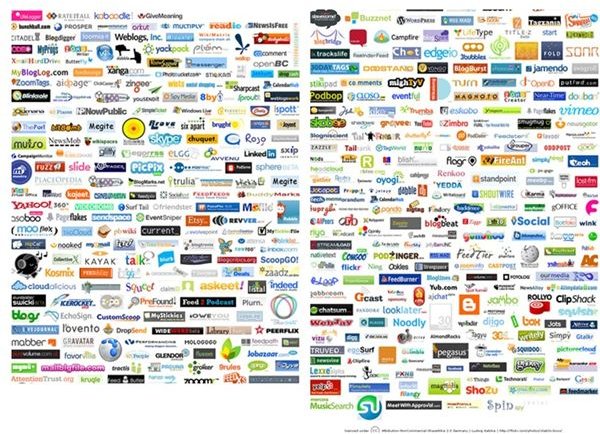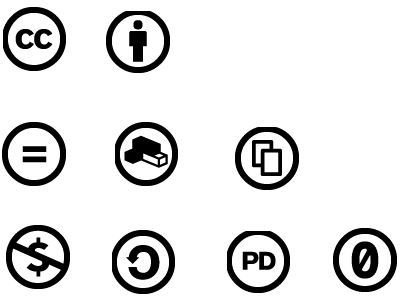An Entrepreneur's Guide to Intellectual Property Rights
What Is Intellectual Property, Anyhow?
Intellectual property – property created by the mind – is thoughts and ideas made concrete, fixed in a form. Once in a concrete form, they belong to their creator, or are assigned to an owner, for specific periods of time, before they become part of the public domain. Different types of intellectual property are protected for varying lengths of time.
Intellectual property is protected for a period of time to allow the creator to benefit from their creativity. However, intellectual property is also, in many ways, the life blood of future productivity. When the IP passes into public domain, it becomes available to be used without restrictions by anyone.
Understanding Intellectual Property Concepts
Intellectual property is used in everyday life and in business, and understanding the rights of intellectual property owners is essential, to use intellectual property ethically. Most people understand that written material is copyrighted, but not necessarily what else can be copyrighted. People usually have an idea of what is meant by an invention, and that inventions can be patented. It can be a surprise to learn that both plants and designs can be patented, as well as the inventions most people think of when they hear about a patent being granted.
-
Definition of Intellectual Property: It May Not Be What You Think
-
Why It’s Important to Perform Intellectual Property Due Diligence
-
How to Create a Comprehensive Intellectual Property Rights Protection Plan
Copyrights - Protection for Creative Work
Copyright is given to creative work. In the US, the act of putting a creative work in concrete form now automatically copyrights it, although in many other countries a copyright must be registered in order to be protected as intellectual property. The length of time a copyright gives a work protected status has steadily increased, and now copyright extends 70 years after the death or the creator,

while copyright for works made for hire is for a 120 year term.
Because copyright law differs from country to country, the World Intellectual Property Organization (WIPO) provides specific information on their website for countries who have signed the WIPO treaty.
-
Copyright Issues with Website Content: Protecting Content Theft
-
Internet Ethics and Copyright Laws: A Discussion of Best Practices
-
Learn More About Web Designers and Copyright Laws for the Internet
Patents: The Inventive Workhorse of Intellectual Property
Patents are given to inventive intellectual property – whether in the form of a design, a concept, a plan for an invention, or a new and manmade biological invention such as a hybrid plant breed, other non-naturally found biological object or a process for creating a naturally occurring biological.
A patentable invention must be new or improved, and not obviously derivable from an existing invention. Patents confer protection for a much more limited time than copyright, generally no more than 20 years at the most. A patent must contain enough documentation for the invention to be recreated from the information in the application, so it can be recreated by others after the protection has ended.
-
What Do Patents Protect and Do You Really Need to Apply for One?
-
Basics of US Patent Law and United States Patent Office Information
Trademarks and Service Marks - Significant Words, Phrases and Logos
Trademarks and service marks are a form of Intellectual property which can be protected for an indefinite period as long as certain conditions are met. They are identifiers or signifiers associated with a particular company, product or service provided by a company. As long as the trademark or service mark is associated specifically, it can be protected. If it becomes a generic term – one used by the general public to refer to a similar type of product or service – it loses its protection. When registered – in the US, at the USPTO – the symbol ® can be used, while unregistered trademarks and service marks can use the symbols ™ and SM to indicate the word or term is a trademark or service mark.
For this reason, trademarks such as Kleenex® and Band-Aid® are actively protected; the company owning them may try to educate the public that the word is a specific trademark rather than a generic term, or seek legal action for its use by others in a generic manner. The use of the word without the ® or ™ symbol is discouraged, because the company does not want it used as a generic term for facial tissue. At the same time, they want the word to be used for its recognition factor. Kleenex is a trademark, which although registered, will probably not keep its registered status indefinitely, as the public does frequently use it generically now. Cellophane and aspirin are formerly trademarked terms that have passed into general use and are not protected anymore.
-
Have a Trademark You No Longer Need? How to Sell a Trademark
-
Coke Trademark History: How Coca-Cola Influenced Trademark Law
Logos - Pictorial Aspect of Trademarks
A logo can be used as either a trademark or service mark, and registered just as a phrase or word can be registered. In some ways, a

logo may be harder to generalize than a word, but they are also possible to subvert by satirizing the logo through change of an element. Logos have the advantage of often being recognizable from a distance, without the need for accompanying words or even distinctive colors. They also often are internationally recognizable.
The Process for Protecting Intellectual Property
Now that you understand the importance of intellectual property to you and your business, think about the intellectual property you do control and use and how to protect it properly. The process can be cumbersome, and in the case of patents, both lengthy and costly, but the rewards are worth it. We walk you through the processes for different types of intellectual property, and how to best approach the process and applications. We cover what you can do yourself, pitfalls, and what you should seek legal help to do.
DMCA - America’s Attempt at Controlling the New Forms of Media
The Digital Millennium Copyright Act is Congress’s attempt to regulate digital media and the incredibly easy process of copying it in our wired world. WIPO’s treaty mandates certain provisions in the law, to align copyright protection with the other member countries who signed it. Other provisions are more controversial and have been used – or misused, depending on your position – to punish popular copying and sharing of music and video.
Fair Use
Intellectual property is protected, but it is also possible for non owners to make legitimate use of part of IP without the need of obtaining permission. This right, in the US, is written into law, but the interpretation of Fair Use, when challenged, is considered on a case by case basis.
Artists, teachers and reviewers all need to have a firm grasp of Fair Use, to make sure they do not overstep the lines of what is appropriate when working with intellectual property. It is also important for anyone who may be posting content on the Internet, if they use content which they do not own.
Creative Commons Licenses
Creative Commons licenses were designed to let creators of intellectual property allow others to use their creations under the terms the creator chose. Licenses range from allowing the use of your work by anyone for any purpose, including derivative work, as long as the original creator is given attribution, to allowing the use of your work, with attribution, only for non-commercial purposes, with no changes to the original creation permitted. There are licenses in between those extremes, and one which allows use of the work with

no restrictions of any sort, including any need to give attribution. This effectively is a way to release your work into the public domain.
As a side note, if you release work with a more permissive license – perhaps CC-by – which allows use for any purpose, as long as attribution is given, and then decide you do not wish your work used for commercial purposes, you can change the license, but it is only from that point forward in time. Earlier users of your work still may use the work under the terms that were allowed at the time they used it.
Non-Disclosure
There are a number of occasions when an entrepreneur may want a non-dIsclosure agreement in place. Whether you are considering hiring someone to work on a project you are developing, need to give them privileged information to allow them to do their job better, or want to discuss financing, you the information you give them protected, so it is not shared with anyone else.
References
- Copyright and patent symbols image by author
- Creative Commons http://creativecommons.org/
- DMCA http://www.copyright.gov/legislation/dmca.pdf
- Mirror Dream Image: sxc.hu/vassiliki
- US Copyright Office http://www.copyright.gov/
- Web 2.0 logos image web 2.0 logos by mmmonica on Flickr
- Creative Commons icons images from Creative Commons site http://creativecommons.org/licenses/
- EFF https://www.eff.org/
- USPTO http://www.uspto.gov/
- WIPO http://www.wipo.int/portal/index.html.en
